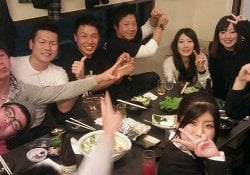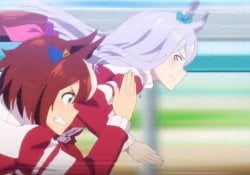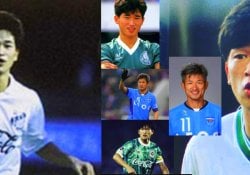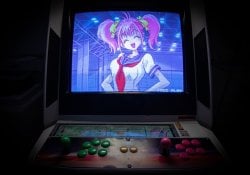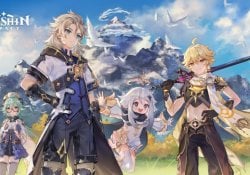If you're used to watching anime, you've seen some kind of Oni. They do exist, but within Japanese mythology. And as is to be expected, these creatures are feared for doing harm to humans.
We will now see more details of how this character from Japanese mythology emerged, his characteristics and how he is still portrayed today.
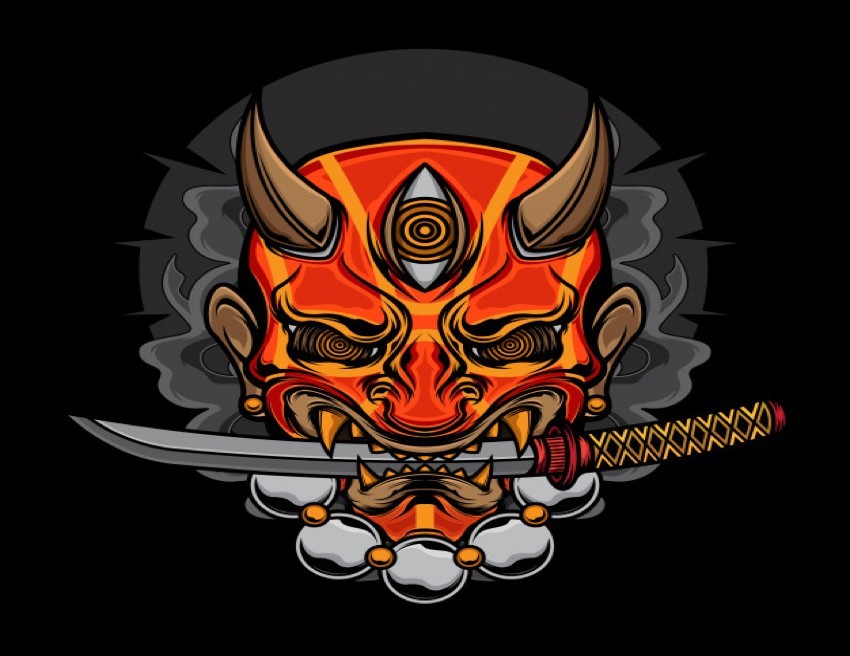
Índice de Conteúdo
What does Oni mean? What are?
The term Oni (鬼) can be translated as ogre or demon or any creature considered evil that preys on humans. The Oni is usually characterized by having a terrifying appearance.
These beings are believed to be "faulty gods", as they are the opposite of what a god should do. They are known to carry only bad things like tragedy and evil.
The Onis are portrayed in the most diverse ways, however the most common are: immense stature, pointed nails and the color red are always present in some way.
There are theories regarding the origin of the Oni. The first is that when a human is a bad person throughout his life, when he dies he becomes an Oni and has the function of torturing those who weren't evil (who weren't bad enough to be Oni) to be tortured in hell.
The other and more common hypothesis is that when a person is very bad they turn into Oni while still alive, however they end up making human lives hell and they even feed on them.
And they still say that there are only two Onis, the red ogre (Aka - Oni) and the other blue (Ao-Oni) who are servants of the great demon king called Enma Dai Oh who is from Buddhism.
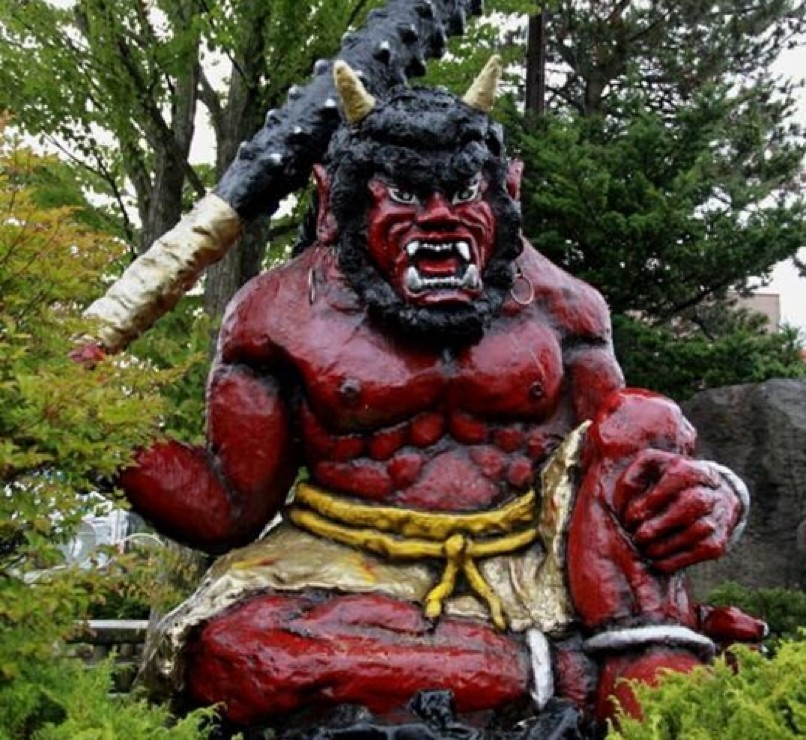
The Oni with the arrival of Buddhism
Buddhism was important for the formation of Japanese culture and had an influence even in relation to these monsters. When Buddhism was introduced in Japan, the Oni took on a very characteristic physical form with demons from Hindu mythology such as Kirtimukha and Yama, the god of the dead.
So after these references the Oni started to have the characteristics that we see today more similar to an ogre. He is a huge humanoid being that although he has human features, the face can be that of some animal such as a monkey, bird, among others. The horn is also a feature of these creatures, sometimes it has only one protrusion and at other times it has gigantic horns.
The garment is a loincloth made of animal skin. The thong is also a reference to the Buddhism. They also possess the baseball bat-like Kanabō (金棒) commonly made of wood or metal and several sharp edges.

Difference between Oni and Yōkai
Yōkai (妖怪) or youkai is a supernatural creature that is part of Japanese folklore and ends up having the Oni as a subdivision. The difference is who the Yōkai is more related to humans with animal traits and other non-human forms.
However, both can refer to the direct term ''ogre'' or ''demon''. But in fact Yōkai is an expression that can be used to refer to any creature with supernatural traits, it doesn't have a one hundred percent accurate translation.
There are cases that Yōkai are even nice. And within the idea of Yōkai there are other creatures that fit as subdivisions as well as shape-shifting beings (Bakemono), objects with some spirit (Tsukumogami) and gods (kami)
And yet when Yōkai and humans relate affectively they generate the Han'yō (半妖) who are usually humans with powers.
An anime that portrays Yōkai well is Midnight Occult Civil Servants (真夜中のオカルト公務員). In this anime, Arata Miyako apparently gets a job as a civil servant who actually ended up in the Department of Night Affairs and there the protagonist must resolve matters regarding the occult and supernatural beings.
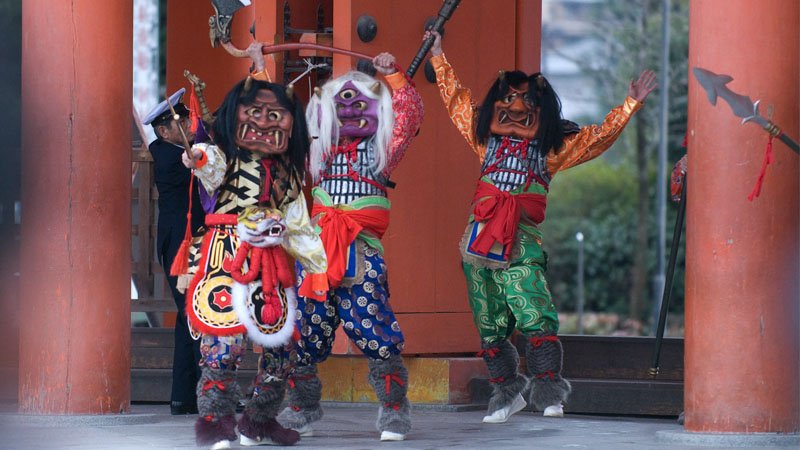
The article is still halfway through, but we recommend also reading:
The Oni in the present
And look how curious, there is a festivity in which the onis are attraction! They are represented in Japanese festivities as setsubun (節分) a Japanese festival for the beginning of spring.
In this event, some participants use masks to symbolize the Onis, as they believe that by doing so, they will be protecting themselves from harm.
Oni is also present in Japanese literature, art and theater. They are also portrayed in anime.
In Japanese drawings these creatures are seen in various forms, gender and age. And they are always there to be defeated by great heroes. There are anime that show a lot about these humanoid creatures.
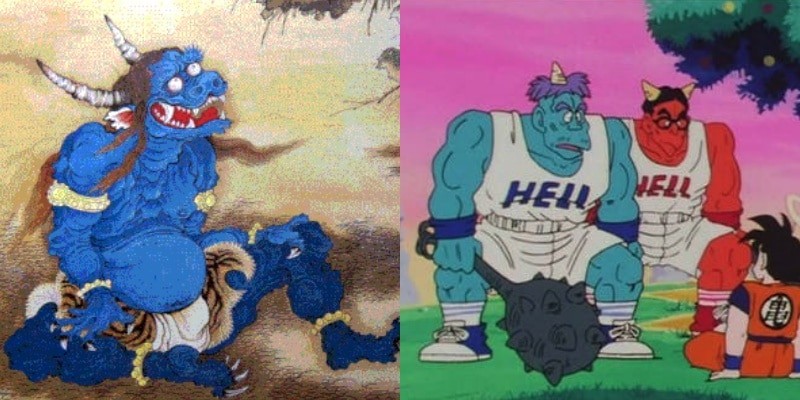
Omni in Anime
Kimetsu no Yaiba it has practically all its plot based on Oni, as these beings feed on humans and also when they are only injured, they transform too. The protagonist Tanjiro has his entire family killed by an Oni and his sister has been turned into one and he aims to find a way to reverse the calamity.
In Naruto, the oni is associated with Juubi (十尾) or Ten Tails, this monster is a reincarnation of a tree that existed in the time of Kaguya Ootsutsuki.
In Dragon Ball Z there are two identical Oni that only change color, one is red and the other is blue. Like many Onis they spend a lot of time in hell so they even wear a shirt with the word Hell on it, but they aren't even that bad, in fact they even get comical in the anime. The reference can be Naita Aka Oni the Red Ogre who cried.
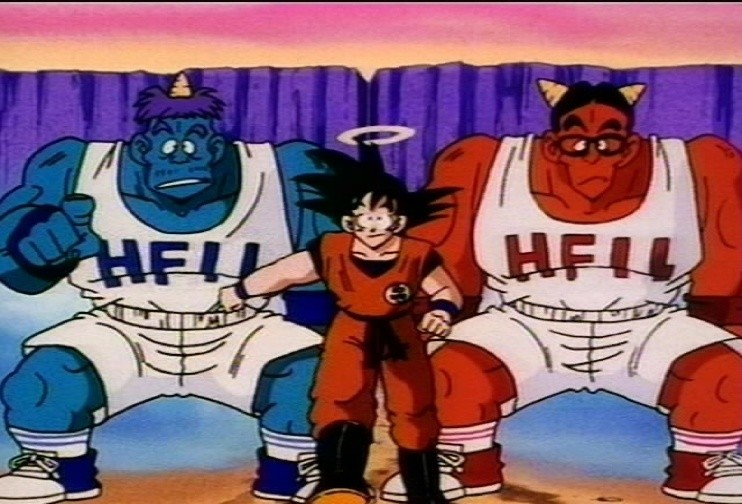
There are many Onis in anime, but when translating it will not always be the original term, it will usually be ogre, monster, creature and even demon.
But regardless of being Oni or Yōkai, it's better for these monsters to stay only in mythology and fiction, isn't it?! After all, they make the stories more exciting, but I believe that no one wants to come across one!

